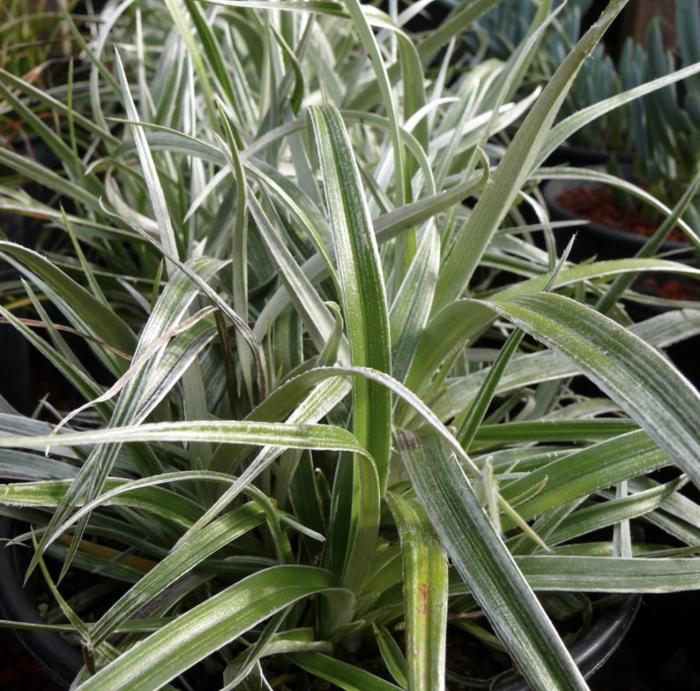Astelia banksii
Shore Astelia, Wharawhara

Description
Evergreen perennial from the lowland and coastal forests of the North Island of New Zealand that grows to 3 to 4 feet tall. The silvery/pale-green foliage of this species is narrow and slightly recurved. As with other Astelia, the male and female flowers are on separate plants (Dioecious), neither are showy and are usually down in the foliage. Plant in full coastal sun to light shade in a well draining soil. Although this plant can take extended periods without irrigation, it looks better if given occasional water. Hardy to 20-25° F - our large specimen plant in the garden was unharmed during the January 2007 freeze with 3 nights in a row at 25° F. A great plant for a container, a specimen or for a mass planting in the garden. There are 25 species of Astelia, 13 endemic to New Zealand - this coastal species in found on the North Island from the North Cape to Taranaki and Hawke's Bay. The name of the genus comes from combining the Greek words 'a' meaning "without" and 'stele' meaning a "trunk" or "pillar" in reference to these plants not forming a stem or trunk. The specific epithet authored by British botanist Allan Cunningham in 1837 honors British naturalist and botanist Sir Joseph Banks. The fruit of this plant is called Wharawhara in New Zealand and the town of Kaiwharawhara, a seaside suburb of Wellingoton (also known as Kaiwarra), takes its name from the abundance of this plant there. The Astelia have long been considered part of the Liliaceae family but most recent treatment puts them in the Asteliaceae family in the Asparagales order with the relatively unknown genera Collospermum, Milligania and Neoastelia.
Plant Type
Perennial
Height Range
3-6'
Width Range
Flower Color
Green
Flower Season
Spring
Leaf Color
Light Green, Silver
Bark Color
n/a
Fruit Color
Black, Purple
Fruit Season
Fall
Sun
Full, Half
Water
Low, Medium
Growth Rate
Moderate
Soil Type
Sandy, Loam, Rocky
Soil Condition
Rich, Well-drained
Soil pH
Acid
Adverse Factors
n/a
Design Styles
Japanese, Meadow, Seascape, Wild Garden, Woodland
Accenting Features
Unusual Foliage
Seasonal Interest
Winter, Spring, Summer, Fall
Location Uses
Background, Perennial Border, Patio, Raised Planter, Walls / Fences
Special Uses
Container, Filler, Hedge, Screen, Mass Planting
Attracts Wildlife
Birds
Water Saving Tip:
Change spray sprinklers to low-flow bubbler or drip systems.
Shrubs and trees are ideal candidates for this type of irrigation because the water is applied directly to the root zones.